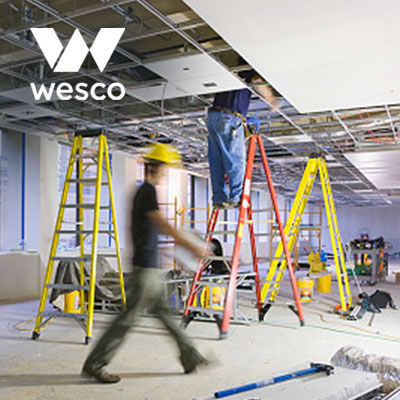How Connected Safety Solutions Can Help During Times of Labor Shortage

According to a 2022 survey by Instawork, a flexible staffing platform, 73% of warehouse operators can’t find enough labor. Contributing to this shortage is a confluence of trends: there’s a high demand for workers with too few entering the industry, while at the same time experienced employees with institutional knowledge are leaving the workforce, leading to a drain on skilled labor and an inability to train newcomers.
Compounding Safety Concerns for Workers and Businesses
When there are fewer workers being asked to do more, concern for safety will arise as a top priority. The trend of decreasing numbers in the workforce poses multiple dangers. It increases the chances of physical harm and burnout, and it also increases risk to businesses that can’t afford to have employees unable to work because of illness or injury. A high rate of churn leads to fewer experienced supervisors for teaching safety practices and monitoring behavior.
This can quickly become a compounding problem when you don’t have enough workers to begin with, in turn those with institutional knowledge can’t adequately train new hires in proper procedure and safe handling, and there are fewer eyes to keep your people safe – if even one employee calls out of work because of an injury, that puts extra stress on your remaining crews. Widespread absenteeism can exacerbate an existing worker shortage, leading to compounding stress on the workforce, which in turn can lead to burnout- and mental health-related absenteeism.
And when stress and fatigue rise in employees, it not only creates hazards for everyone on the job and has been shown to increase the risk of illnesses and injuries, but it also has a measurable impact to business’s bottom lines with an estimated annual cost of $136.4 billion from fatigue- and health-related productivity losses (OSHA).
Putting People First with Connected Safety
Understanding the importance of creating a safe work environment through a culture of safety starts with taking care of people. Especially during a labor shortage, the need to take better care of people is of utmost importance to a safe work environment. Safety solutions are the cornerstone to addressing the cascading problems that can occur without a safe, healthy workforce. With proper expertise, safety protocols can reduce absenteeism because of fewer workplace injuries.

The challenge to establish safety culture and to monitor the workplace for safe operations is no small feat. So, how can you do more about safety when there’s already too much work with too few people?
Safety experts across industries are turning to technological advances in the Internet of Things and connected devices to help build holistic safety solutions. With the guidance of safety professionals, this new trend of connected safety and security can augment your workplace to enhance the safety of your workforce.
According to OSHA, environmental hazards pose some of the top risks to workplace safety. Monitoring and controlling a work environment with connected IoT devices can abate risks such as dangerous working temperatures, malfunctioning equipment or machinery, electrical hazards, obstacles, trip hazards, open trap doors, and chemical exposure, which leads to safer operations and better insights for improving workplace safety.
Wesco’s safety experts can help you develop a safety program customized to the needs of your workers and business. A well-planned professional program that integrates training and education with purposeful connected devices, personal protective equipment and safety equipment maintenance can ease the pressure on your employees by automating the monitoring and identifying concerns before they lead to an incident. When these processes become automatic, they’re more easily engrained into an environment – helping to cement safety culture in the workplace.
With a reinforced safety culture, connected safety tech can further support business goals through better regulatory compliance, reducing recordable incidents and near misses, and providing insights for administrative controls to then identify and mitigate hazards.
Just as safety concerns can be compounded by lack of bandwidth, prioritizing your safety program can compound positive outcomes. From creating a safer environment to improving the health and well-being of workers, to increasing productivity and output, and identifying operational efficiencies, a connected safety program takes care of your people by putting them first.
By Lorenza Ordonez, Director of Sales for Safety, Wesco
Post a comment to this article
Safety+Health welcomes comments that promote respectful dialogue. Please stay on topic. Comments that contain personal attacks, profanity or abusive language – or those aggressively promoting products or services – will be removed. We reserve the right to determine which comments violate our comment policy. (Anonymous comments are welcome; merely skip the “name” field in the comment box. An email address is required but will not be included with your comment.)


